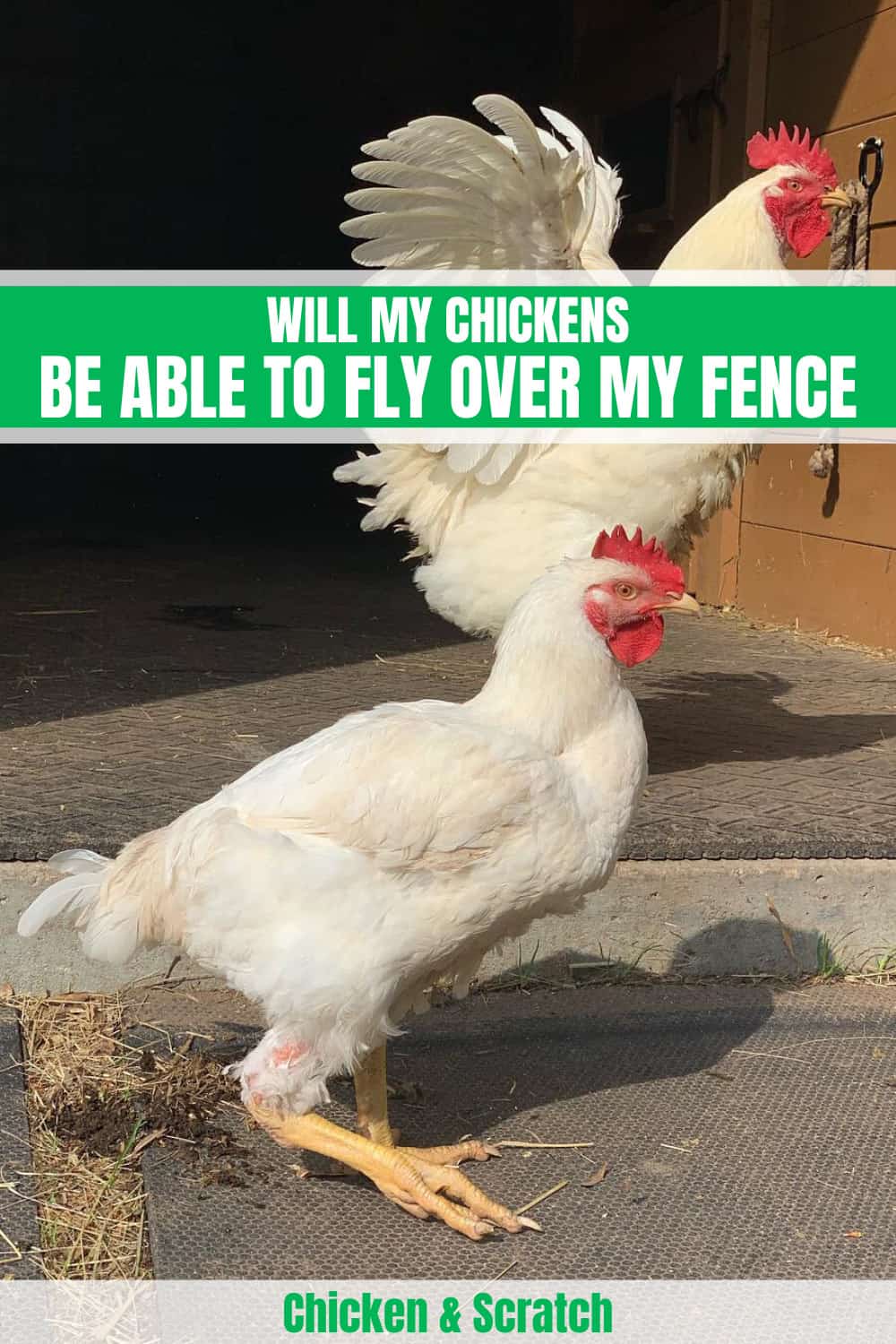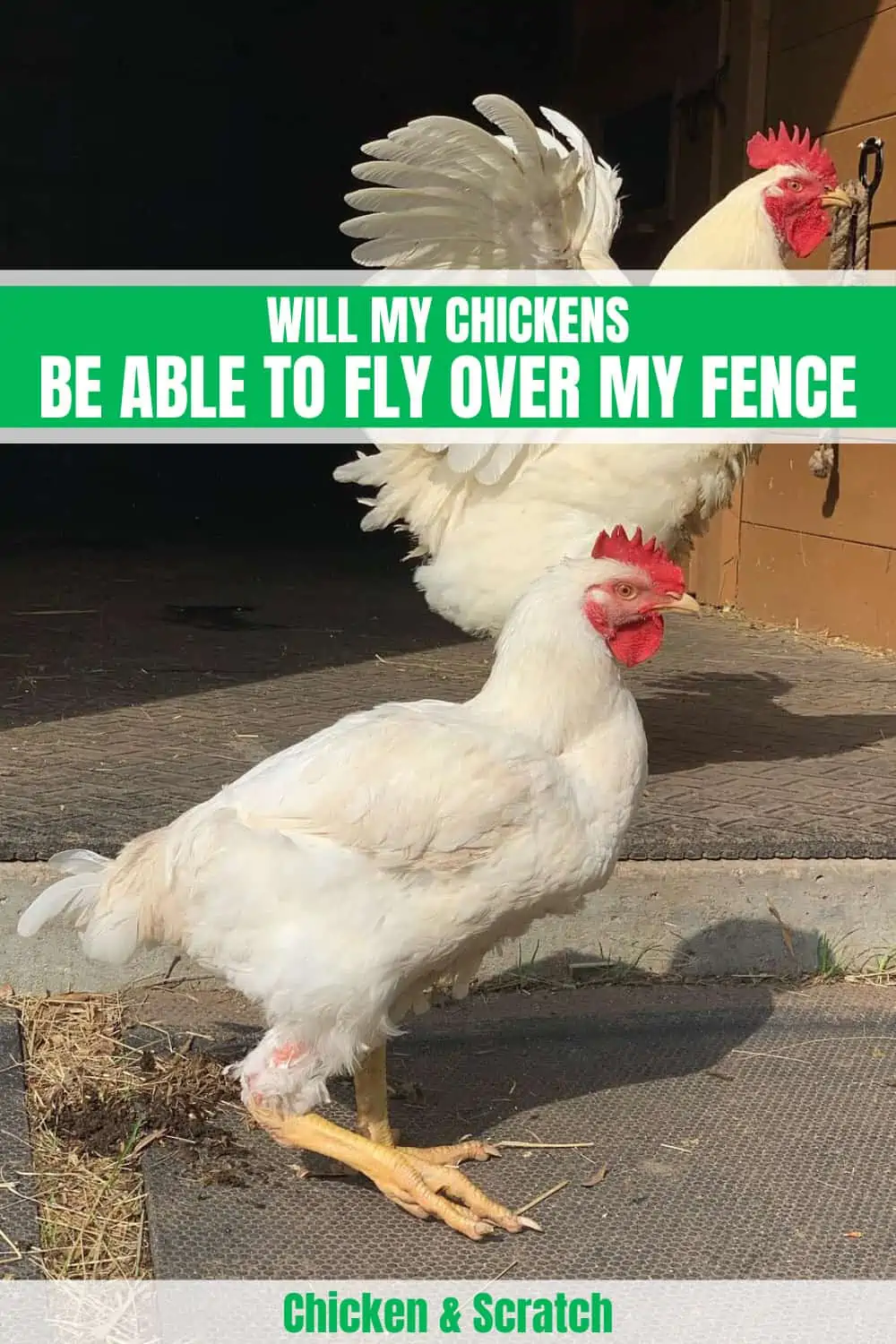Have you seen the animated motion film Chicken Run? It is a story of a bunch of farmed chickens trying to escape. Unfortunately, they are always getting caught. They were required to produce eggs daily, or the terrifying farm mistress would slaughter them. The chickens couldn’t just fly away.
Chicken’s Flight Ability: Is It True?
A chicken is a bird. Birds can fly, so can’t a chicken fly? The short answer to the previous question is yes; they can, but not too far.
Flight is an incredibly beneficial skill for long travels, prey hunting, and most especially for escaping. However, the price of a flight is pretty high. It limits weight, and body size, moreover, takes a lot of energy.
This scenario provides a more natural understanding that if a bird species does not fly much, this bird is conserving energy for other purposes. Historically, people groups have domesticated chickens for so many years.
When a particular bird species stops facing a demand for flight, it can choose to refrain from it. At the same time, it changes some bodily features to adapt to this minute behavior.
Throughout the adaptation, a bird’s wings may begin to shrink, and its hollow bones may become dense. Their brawny feathers may start to become light and soft. Chickens are known to have small wings and large, bulky muscles than other bird species, which explains why chickens experience a hard time taking off.
Michael Habib is an assistant professor at the University of Southern California who specializes in the biological sciences. Michael Habib said, “They’re so close to being completely flightless that you don’t necessarily have to put a roof over them to keep them in.”
You will notice a particular flight pattern of the chicken:
- Flaps their wings fast
- Faster wing flaps
- Glides
- Motion gliding
This may be fun to watch, but for chicken owners, they prevent this as much as possible. Who knows what a chicken can do once it gets out of the chicken fence? This is not only to ensure their profit, nor to keep them from messing all over the place, but for the chickens’ safety as well.
If a chicken has been chased or flew a few miles because of fright, this may negatively result in disorientation. Chickens won’t be able to find their way home.
Wing Clipping and Brailing
If you are a chicken owner who needs to make sure your chickens are safe and won’t come out, you can try these two techniques: Wing Clipping and Brailing. These are done in essence with the chickens’ safety — and not to remove the bird’s flight capability. Some people do not believe in it, and others do, as to why it is considered a personal chicken owner’s thing.
Wing Clipping is like giving your chickens a haircut by trimming their primary flight feathers. Those long, vibrantly colored feathers are located at the ends of its wings. The main goal of wing clipping is to unbalance the lift coming from both wings, thus making sure the flight maintains a downward glide.
If the chicken is still persistent to fly despite the first trimming, you can also try trimming the secondary feathers. This technique is only temporary and should be maintained since new feathers grow each year when chickens molt.
This can be in some way compared to declawing a cat. Although with cat declawing, the cutting off their claws is mainly done for human safety, and not for cats. So if these cats ever get in trouble, they may be at high risk without their claws to defend themselves. With wing clipping, it is done for the benefit of owners and chickens, a win-win situation for both.
Brailing, on the other hand, means binding or wrapping one wing with a strap. Additionally, brailing is any soft cord to ensure that the wings remain intact and become unavailable for flight.
This technique is not commonly used since obviously it consumes a lot of time and needs careful attention. Moreover, it is prone to cause long term injury or disability for the chicken. Brailing is your best bet to keep them from getting away, especially if your chicken is the exhibitionist type.
One thing to bear in mind, though is that this breed came from the wild junglefowl species. So, if ever the genes try to come out again, these chickens will attempt to fly away no matter how strictly you contain them.
Chicken Flight: Which Can and Can’t?

Yes, chickens can fly. Not too far though, and indeed not all breeds can. It may be easier to see a chicken and remember that it’s not a good flyer. So, for your reference, here is a list of some breeds known to be flying chickens:
- Bantam hens are the first ones on the list. They are known to fly very well amongst the chicken breeds. They can almost pull off a vertical takeoff and attains noticeable heights.
- Appenzeller, originating from the Appenzeller region in Switzerland, loves to fly.
- Red Rangers do a lot of escaping that makes them more determined to fly.
- Araucanas roost up in trees sometimes and get fancied with the challenges that flight brings.
- Mediterranean breeds are also known as flight birds, e.g., Ancona and Leghorn.
- Finally, the Sumatra chicken, which is known to be a primitive breed, retains a vigorous flight ability.
In contrast with this, bird species that are known to be flightless can be similar to chickens with less flying capabilities. Without the need or pressure for flight, this skill repurposes into something else. Ostriches, for example, have grown and evolved.
Thus, making them heavy enough for their wings to lift. At the same time, they developed more durable feet and thicker legs which turned them into superb runners. Ostriches are now known as the fastest two-legged animal.
Likewise, penguins have also repurposed their keel bones and flight muscles for swimming. Their wings are called “flippers,” which are mainly used to propel themselves through the water.
The same concept may have been applicable as to why the majority of the chicken breeds are not flight-capable. Considering their ancestry, how and for what purposes they travel the world, and their domestication. These chickens may have adapted several times throughout history.
Additionally, according to several chicken trivia sites, including the Guinness World Book of Records, here are some interesting facts about chickens:
- Their recorded longest flight: 13 seconds.
- Their registered furthest distance: 301.5 feet.
- Agility: chickens can run nine miles per hour.
Chicken Flight: Why Not and Why Still Fly?

People are usually surprised whenever they find or see a chicken that can fly. Admit it though, chickens are not good flyers, but they are fun to watch. There are a lot of struggles that these chickens face amidst their urge and desire to fly. Some of the reasons why chickens cannot take off so well are these:
- Body Structure. Their round body and high set wings consume a lot of stamina during flight.
- Weight and Wingspan. Most chickens weigh around six to ten pounds with an average wingspan of 3 feet. A hawk weighs close to three pounds with a wingspan that even exceeds four feet.
- Chickens have their eyes on the sides, unlike good flyers, like hawks, who have their eyes forward. Chicken eyes are useful for looking after predators but not designed for flying.
- Selective Breeding. The modern chicken breeds that we see now are not natural. A lot of humans have tinkered with these chickens for many years, especially during the Hen Fever phenomena, developing new breeds for marketing and business purposes and not for these chickens’ survival means.
Some factors are natural, and some are human-made, some are just inevitable. But despite these hindrances, these feisty chickens still do not waste their chances when they get some. What could be fueling them up?
- One thing that animals can brag about is their instinct. Predators are one reason to trigger a chicken’s flight capability.
- Chickens are driven by their curiosity. They always love to discover new things around them. It may have something to do with the neighbor’s fresh flowers, or greener grass, that the chicken can’t resist discovering themselves.
- Some chickens exhibit a lot of determination. Even those with their wings trimmed remain stubborn and still attempt to fly. This trait may have come from their wild junglefowl ancestors used for cockfighting.
- Roosters try to get attention and impress hens through flight skills — one way of getting a mate.
- Lastly, when chickens need to stay out of something, they use flight to avoid fights or confrontations.
Summary
There you have it; chickens can indeed fly. They may be less capable of flying compared to most flocks we usually see roaming the sky, but their determination tells a whole different thing. Despite challenges, historical and anatomical, these chickens are raging with lots of possibilities and never give up. Humans can relate to this beautiful brood of species.

Joseph Hudson has been raising chickens for over 15 years. In 2018, he completed the Agriculture & Natural Resources program at Mt. San Antonio College. He currently raises over 1400 chickens on his 7.5-hectare farm. He keeps sharing his experience on raising healthy and happy chickens on Chicken Scratch The Foundry.








